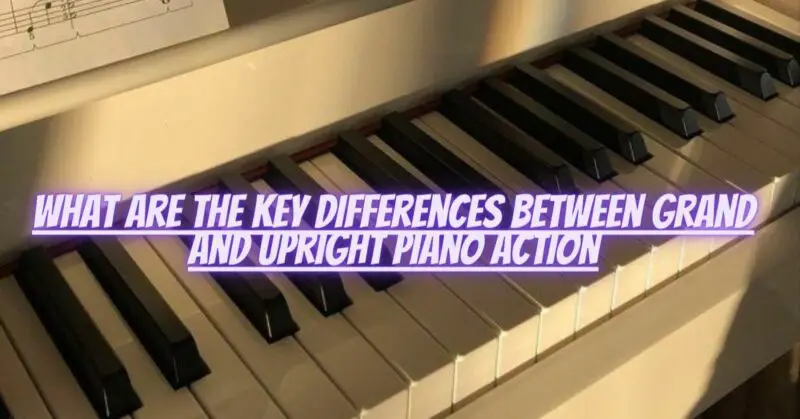Grand and upright pianos differ not only in their physical appearance and size but also in the design and functionality of their piano actions. The piano action is a crucial component responsible for translating the pianist’s keystrokes into sound. Let’s explore the key differences between grand and upright piano actions:
1. Orientation: The most apparent difference between the two piano actions is their orientation. In a grand piano, the action lies horizontally and is located beneath the strings. When the pianist presses a key, the action’s hammers move upward to strike the strings from below. In contrast, an upright piano’s action is vertical, positioned at the back of the keyboard. When a key is pressed, the hammers move horizontally to strike the strings from the side.
2. Repetition Lever: Grand pianos typically feature a repetition lever, a mechanism that allows for faster key repetition. This lever ensures that the key returns to its resting position quickly after being released, enabling rapid playability for intricate passages. Upright pianos usually lack a repetition lever, which can make rapid playing more challenging.
3. Escapement Mechanism: Both grand and upright pianos have an escapement mechanism, which is a vital part of the action responsible for the key’s release. In a grand piano, the escapement mechanism is located near the front of the key, allowing the hammer to escape after striking the string. In an upright piano, the escapement mechanism is typically located at the back of the key, enabling the hammer to fall back quickly.
4. Gravity vs. Spring-Driven Action: Grand pianos have a gravity-driven action, meaning the weight of the key and the action components aids in key return. The hammers fall back due to gravity, which contributes to a light and responsive touch. Upright pianos, on the other hand, utilize springs to assist in key return, making the action feel slightly heavier compared to grand pianos.
5. Key Length and Leverage: Grand pianos generally have longer keys, which provide greater leverage and control for the pianist. Longer keys also allow for a smoother playing experience and more nuanced expression. In contrast, upright pianos have shorter keys, which can require slightly more effort from the pianist to achieve the same level of control.
6. Touch and Tone Variation: Due to the differences in action design, grand pianos often offer a wider range of touch and tone variation, making them preferred for more expressive and dynamic playing. Upright pianos may have a more limited dynamic range and touch responsiveness.
7. Space and Size Considerations: Upright pianos are more space-efficient than grand pianos, making them suitable for smaller rooms and homes with limited space. Grand pianos require more floor space and are typically found in larger performance venues or spacious living areas.
In conclusion, while both grand and upright pianos provide beautiful musical experiences, their actions have distinct characteristics that influence touch, playability, and responsiveness. Grand pianos offer a more responsive and dynamic playing experience, while upright pianos provide a space-efficient option for homes and venues with limited space. Ultimately, the choice between the two types of piano actions depends on the pianist’s preferences, playing style, available space, and budget.


